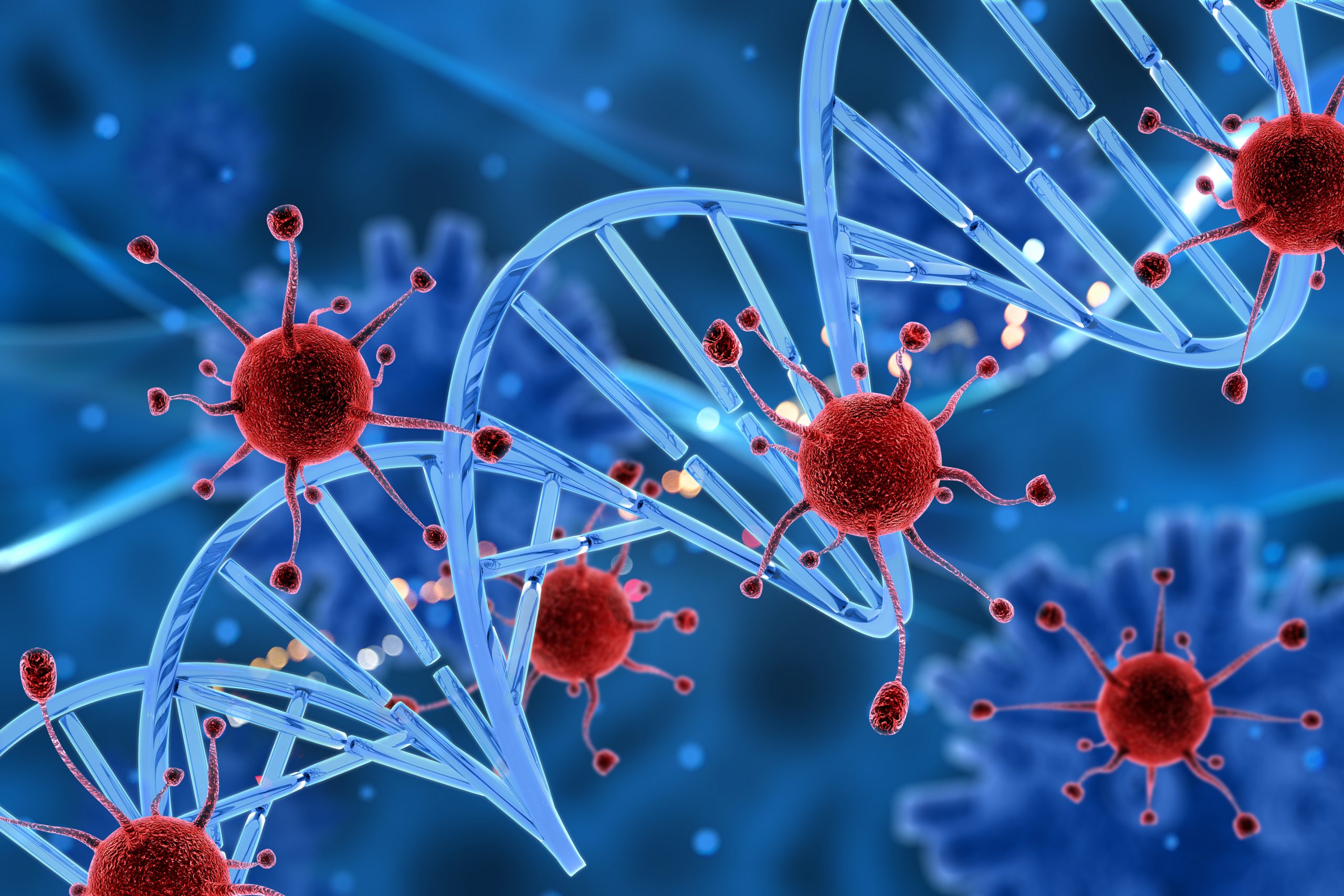

In the most recent issue of the journal Cell, two independent Ludwig Cancer Research studies demonstrate that neutrophils, a type of immune cell whose presence in tumor microenvironments has historically been linked to a poor prognosis for patients, can be crucial to the success of cancer immunotherapies. In a study co-led by Ludwig Lausanne Member Mikal Pittet and Allon Klein of Harvard Medical School, neutrophils after immunotherapy assume a functional state known as the Sellhi state in which they become powerful antitumor immune agents in mouse models of lung and colon cancer.
“Our results demonstrate that neutrophils, which play an important role in battling microbial pathogens, can also be mobilized to fight cancer if they are appropriately engaged,” said Pittet.
In a separate Ludwig study, Taha Merghoub and Jedd Wolchok, co-directors of the Ludwig Collaborative Laboratory at Weill Cornell Medicine, found that neutrophils are necessary for the complete eradication of tumors during immunotherapies like immune checkpoint blockade in a mouse model of melanoma. (ICB). Tumor samples from patients who had successfully undergone ICB treatment were discovered to be brimming with neutrophils, supporting these results.
“Our study identified a unique subpopulation of neutrophils with anti-tumor activity,” said Merghoub. “When activated by an experimental immunotherapy, this subpopulation kills cancer cells that have evolved to escape a key mechanism of immune recognition and so helps eliminate advanced melanoma tumors in mice.”
The majority of currently used immunotherapies, including ICB, mainly activate CD8+ T cells, which can identify and eradicate cancer cells. The ability to switch between states that promote tumor growth and states that eliminate tumors is exhibited by a variety of immune cell types. More and more data from mouse studies point to the possibility that neutrophils also exhibit this functional dichotomy. However, careful examination of their activity in tumors and during immunotherapy has long gone unexplored, in part because of the limitations of the methods used by researchers to isolate and test individual cells for these kinds of studies.
Pittet, Klein, and their associates discovered that neutrophil numbers increase in tumors that react to immunotherapy in both mouse and human lung cancers. They have been studying the subtle functional variations within neutrophil populations. In models of lung and colon cancer, they demonstrate that neutrophils in the Sellhi state are the ones that proliferate and that their growth is crucial for immunotherapy to be effective.
“We found that if we block this therapy-elicited neutrophil response in mice, the benefits of immunotherapy are lost,” said Pittet.
In this paper, the researchers demonstrate that neutrophils induced into a Sellhi state during successful immunotherapy exhibit this pattern of gene expression. They analyze neutrophil activation in a rodent colon cancer model and find that it depends on three essential components of anti-tumor immunity. It specifically relies on the production of a substance (IL12) by associated immune cells that activate killer T cells. Killer T cells then produce the signaling protein interferon-, which further stimulates immune responses and—vitally—enables the Sellhi neutrophil response. When they made their neutrophil discovery, Merghoub, Wolchok, and their colleagues were researching a different aspect of tumor immunology.
To avoid being targeted by the immune system, the cancer cells that make up tumors frequently evolve to cease producing antigens, which are protein fragments that signal disease to T cells and other immune cells. In a mouse model, the researchers had earlier demonstrated that the combination immunotherapy they were developing could completely eradicate advanced melanoma tumors, seemingly circumventing this immune evasion. This treatment combines chemotherapy with two novel immunotherapies: an injection of CD4+ T cells designed to target a melanoma antigen and the administration of antibodies that stimulate the OX40 molecule on T cells. The latter therapy activates regulatory T cells that block immune responses while switching CD4+ T cells, which are better known for orchestrating immune responses, into a cancer cell-killing state.
In the current research, Merghoub, Wolchok, and their colleagues used a mouse model developed for the study of antigenic heterogeneity to investigate the mechanisms by which their experimental therapy eliminates cancer cells that have evolved to evade T cell recognition. After immunotherapy, their analysis showed that mice’s tumors were consistently infiltrated with activated neutrophils, a finding they also observed in tumor samples from melanoma patients who had reacted favorably to ICB therapy. The mice’s neutrophil depletion reduced the experimental therapy’s ability to cure the rodents. Additionally, they demonstrate how these neutrophils aid in the removal of tumors in a colon cancer model.
Our findings reveal a previously unrecognized and essential role played by neutrophils in mopping up cancer cells that evade the T cell attack stimulated by immunotherapies,” said Wolchok. They reiterate the importance of other types of immune cells in the success of ICB and other immunotherapies that activate T cell responses to treat cancer.
Echoing the findings of the Ludwig Lausanne study, the Ludwig Weill Cornell Medicine study identified unique gene expression signatures and cell surface molecular markers in tumor-targeting neutrophils. Further, activated neutrophils that helped clear cancer cell variants that had eluded T cell recognition expressed high levels of an enzyme that drives the production of nitric oxide and is associated with enhanced cell-killing capability in neutrophils.
“Our studies have independently reached the same conclusion about the importance of the neutrophil activity to the success of distinct immunotherapies in models of three different types of tumors,” noted Pittet. “This suggests we have discovered an important dimension of tumor immunology—one that, we hope, will pave the way for new treatment strategies and the improvement of existing immunotherapies against cancer.”
more recommended stories
 DNA Damage Triggers New Cell Death Pathway
DNA Damage Triggers New Cell Death PathwayTumor cells are killed by chemotherapy,.
 Comorbidities Worsen Sleep Quality in Multiple Sclerosis
Comorbidities Worsen Sleep Quality in Multiple SclerosisComorbidities in multiple sclerosis (MS) are.
 Latitude and Skin Type-Based Vitamin D Guidelines
Latitude and Skin Type-Based Vitamin D GuidelinesIn a recent study published in.
 AOMs Reduce CVD Risk in Obese Medicare Patients
AOMs Reduce CVD Risk in Obese Medicare PatientsObesity is a leading cause of.
 Dopamine Linked to Brain Development in ASD
Dopamine Linked to Brain Development in ASDSummary: A recent study links autism.
 Microplastics in Human Blood: Cardiovascular Risk
Microplastics in Human Blood: Cardiovascular RiskAn investigation disclosed in the esteemed.
 Gene Therapy Offers Hope for X-linked Sideroblastic Anemia
Gene Therapy Offers Hope for X-linked Sideroblastic AnemiaALAS2 gene mutations that are essential.
 Mini Brains: Advancing Alzheimer’s Research
Mini Brains: Advancing Alzheimer’s ResearchIn summary, scientists created microscopic “mini-brains”.
 Inflammatory Bowel Disease Linked to Parkinson’s Disease
Inflammatory Bowel Disease Linked to Parkinson’s DiseaseBoth inflammatory bowel disease (IBD) and.
 NMSC Skin Cancer: Rhenium-188 as Surgery Alternative
NMSC Skin Cancer: Rhenium-188 as Surgery AlternativeAccording to a recent study published.

Leave a Comment